Very little is known about the woman called Charcoal Annie. She roamed the Riverina district of southern New South Wales, a lone woman swaggy whose home was usually an encampment near a river. She collected the wood which had often become trapped near the river bends of the Murray and Murrumbidgee, after it had been washed down by flood waters.
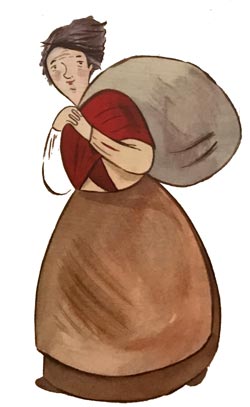
Charcoal Annie would have dug a pit and filled it with the collected wood. After setting it alight, she would have covered the fire with a piece of tin sheeting, thereby reducing the air flow into the pit and allowing the wood to ‘cook’. The wood took a few days to become charcoal. During this time Charcoal Annie would have carefully checked the amount of air getting inside the pit. She would also have noted the colour of the smoke rising from the pit, for as the wood became charcoal the smoke changed from yellowy grey to transparent blue. When this occurred she would have sealed the pit, possibly placing some large rocks on the tin cover. Then it was just a matter of waiting and letting the charcoal cool, before bagging it in corn sacks and carrying it to the neighbouring towns to sell to the blacksmiths.
There is only scant mention of Charcoal Annie in a few books, magazine and newspaper articles. None that I have read mentions any source for their information. Perhaps the earliest known reference to her appeared in a small, anonymous article in the Bulletin magazine, 21 October 1936.
‘Female hatters were few and far between in the Riverina,’ the article commences, ‘but Charcoal Annie was known from Mildura to Maude.’ The use of the colloquial expression ‘hatters’ implies that she showed erratic, reclusive and perhaps eccentric behaviour. The term derives from hat makers use of mercury in the curing process when making felt. Any unusual behaviour was attributed to their occupational use of mercury. The use of ‘hatters’ also suggests that Charcoal Annie would most likely be found deliberately living away from towns. The potential dangers of such an isolated existence would appear greater for a woman.
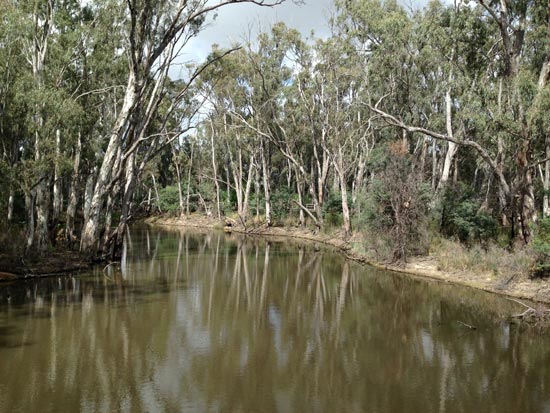
The writer goes on to relate an actual meeting with Charcoal Annie, while on a camping trip with a friend. It occurred near the town of Gol Gol, on the Murray River.
‘In the dim dawn.’ he writes, ‘my mate aroused me and pointed to a dark object moving about on the river edge about a quarter of a mile away.’ Assuming it to be a kangaroo, his friend shot at it and it ‘lit out for the gumsuckers higher up’. The latter is a slang reference to any person born in Victoria. ‘Later,’ he continues, ‘a middle-aged woman came past our camp with a sack on her back and stopped to ask if we’d seen any unprintable fool with a rifle, as she’d blanky near stopped a bullet. Such was our intro. to Charcoal Annie.’ The use of ‘unprintable’ and ‘blanky’ suggests that Mary was not averse to swearing.
The writer then goes on to describe her eyes, a description which other writers have used without any acknowledgement.
‘Her great, deep, haunted eyes were her most marked characteristic. She lived alone, apparently did not drink and remained anonymous in death.’
Besides selling her charcoal to blacksmiths, we are further informed that she also sold to ‘users of suction-gas engines’. The number of motor vehicles converted to ‘producer gas’ increased dramatically with the coming of petrol rationing during the Second World War. The gas generators were often self-made and contained red hot charcoal, an essential part of the process to produce the gas.
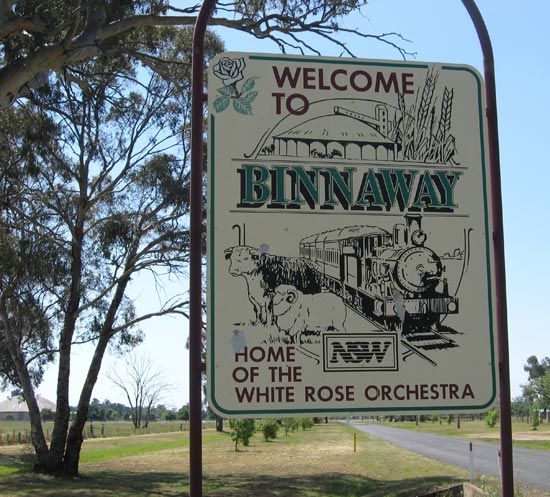
It obviously needed skills of improvisation to run these producer gas cars successfully. It was essential to estimate as accurately as possible, accounting for variables such as weather and road conditions, the amount of charcoal required. Trips were seen in terms of the necessary number of bags needed. During the Second World War the White Rose Orchestra, led by Frank Bourke and based in the New South Wales country town of Binnaway, converted their Ford V8 to producer gas. When playing for the Galargambone Police and Fireman’s Ball, for example, they left Binnaway with fourteen bags of charcoal. Because of heavy rain, unsealed roads and few bridges, they were forced to make a detour. This left them with insufficient charcoal to complete the trip without assistance. Another of their engagements in Dunedoo required ten bags.
In February 1993 I composed a song about Charcoal Annie and taught it to school children as well as performing it at concerts. In 2011 the ABC included the song in their Sing collection for that year. This meant the song had the potential to be sung in schools all over Australia.
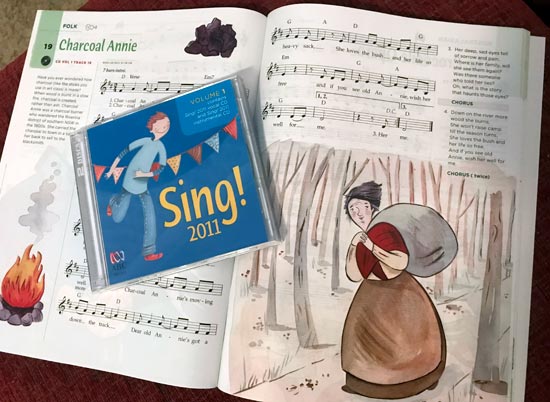
A short, anonymous article appeared in the Barrier Daily Truth, 16 July 1942. Including the familiar, almost obligatory description of her ‘great, deep, haunted eyes’, the writer fittingly concludes that ‘she died a mystery’.
I hope in the future that more of this enigmatic woman’s life is revealed and Charcoal Annie continues to be remembered.
© Jim Low
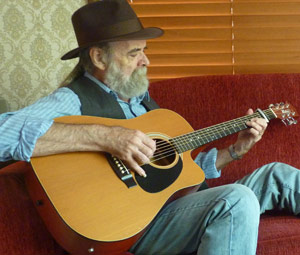 Jim is a singer/songwriter and published author. His background is in education and he has also developed learning materials for the NSW Department of School Education. His passion is Australian history.
Jim is a singer/songwriter and published author. His background is in education and he has also developed learning materials for the NSW Department of School Education. His passion is Australian history.
CONTACT: jim@jimlow.net
WEBSITE: jimlow.net
Read the lyrics and listen to the song, Charcoal Annie
